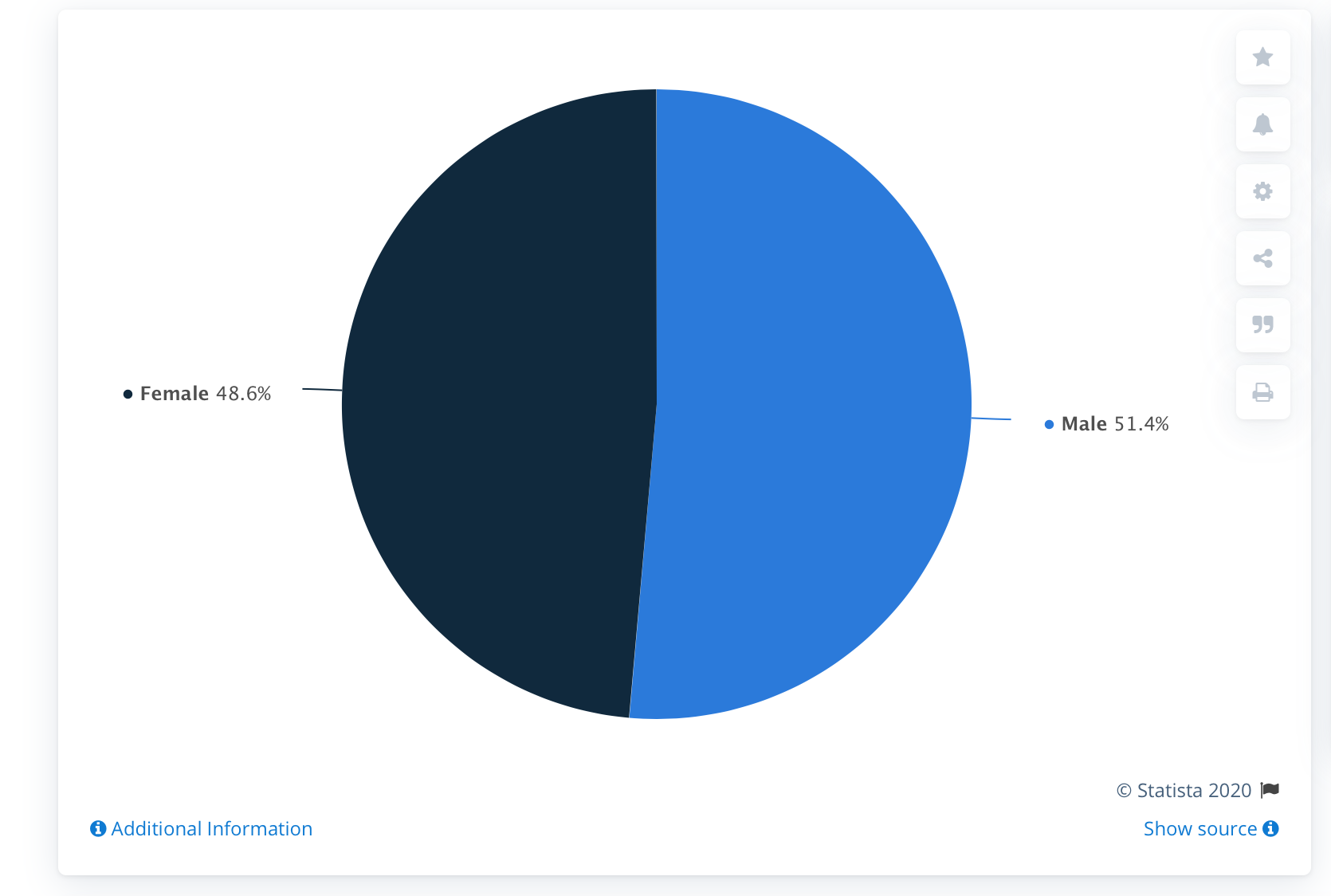Actually, not in that sense, but you can find relevant information here.
For good and for bad, the Coronavirus epidemic is generating a large amount of data. And as more data become available, Statistics plays its part in understanding the virus in terms of its mechanisms of transmission and spread.
One very obvious aspect of the original Chinese data – described in an academic paper in the Lancet – which has subsequently been confirmed as data from other countries became available, is a difference in death rates for infected males and females. The rate of contagion for males and females is broadly similar, as shown in the following diagram

The slight difference in rate of infection between the sexes has also been subsequently observed in other countries – males always having a slightly higher infection rate – so although the difference is slight, it’s likely to be a genuine phenomenon rather than a random effect due to small amounts of data.
But in any case, this difference in infection rates pales into comparison when comparing death rates for males and females. In the original Lancet paper the ratio of male to female Coronavirus deaths is reported as 73% : 27%. So if you’re a male, does this place you in a higher risk category?
Not necessarily. In pre-coronavirus days, various posts in this blog – for example here – discussed the way that an apparent effect, such as death rates varying according to an individual’s sex, could actually be due to an entirely different phenomenon. In particular, smoking rates among men in China are very much higher than those of women. And since almost all deaths due to Coronavirus occur via failures of the respiratory system, it was hypothesised that the increased death rates among men was actually a consequence of smokers being at higher risk.
Unfortunately for men – though not for smokers – this hypothesis has been found to be unsupported by data from other countries. Based on the latest available data from all countries, the death rates for males and females who contract COVID-19 are given by the following table:
 The fatality rates are different depending on whether you look at confirmed or unconfirmed cases, but in each case the ratio of fatalities of males to females is around 62% : 38%. This is a less extreme ratio than was found from the Chinese data, but since this now includes data from countries where the difference in smoking rates between males and females is much smaller than for China, it implies that smoking is not the only issue. It might explain why the ratio is worse for China than elsewhere, but it can’t be the whole story.
The fatality rates are different depending on whether you look at confirmed or unconfirmed cases, but in each case the ratio of fatalities of males to females is around 62% : 38%. This is a less extreme ratio than was found from the Chinese data, but since this now includes data from countries where the difference in smoking rates between males and females is much smaller than for China, it implies that smoking is not the only issue. It might explain why the ratio is worse for China than elsewhere, but it can’t be the whole story.
This New York Times article based on the Italian data points out that previous coronavirus epidemics such as SARS and MERS also led to higher fatality rates among males, and argues this is likely to be due to women having generally stronger immune defence systems due to genetics.
Comments:
- Various newspaper articles have discussed this phenomenon: here, for a discussion of the Italian data; here for a discussion of the Spanish data.
- The Lancet paper referred to above was published on 29 January. It concluded
We have to be aware of the challenge and concerns brought by 2019-nCoV to our community. Every effort should be given to understand and control the disease, and the time to act is now.
Of course, it’s easy to be wise after the event. But the Lancet paper was wise before any of the events outside of China had taken place.
Update: There’s new evidence from data in the UK which adds weight to the difference in death rates for males and females due to COVID-19. A discussion of these data, repeating many of the points made in the post above, is available here.
